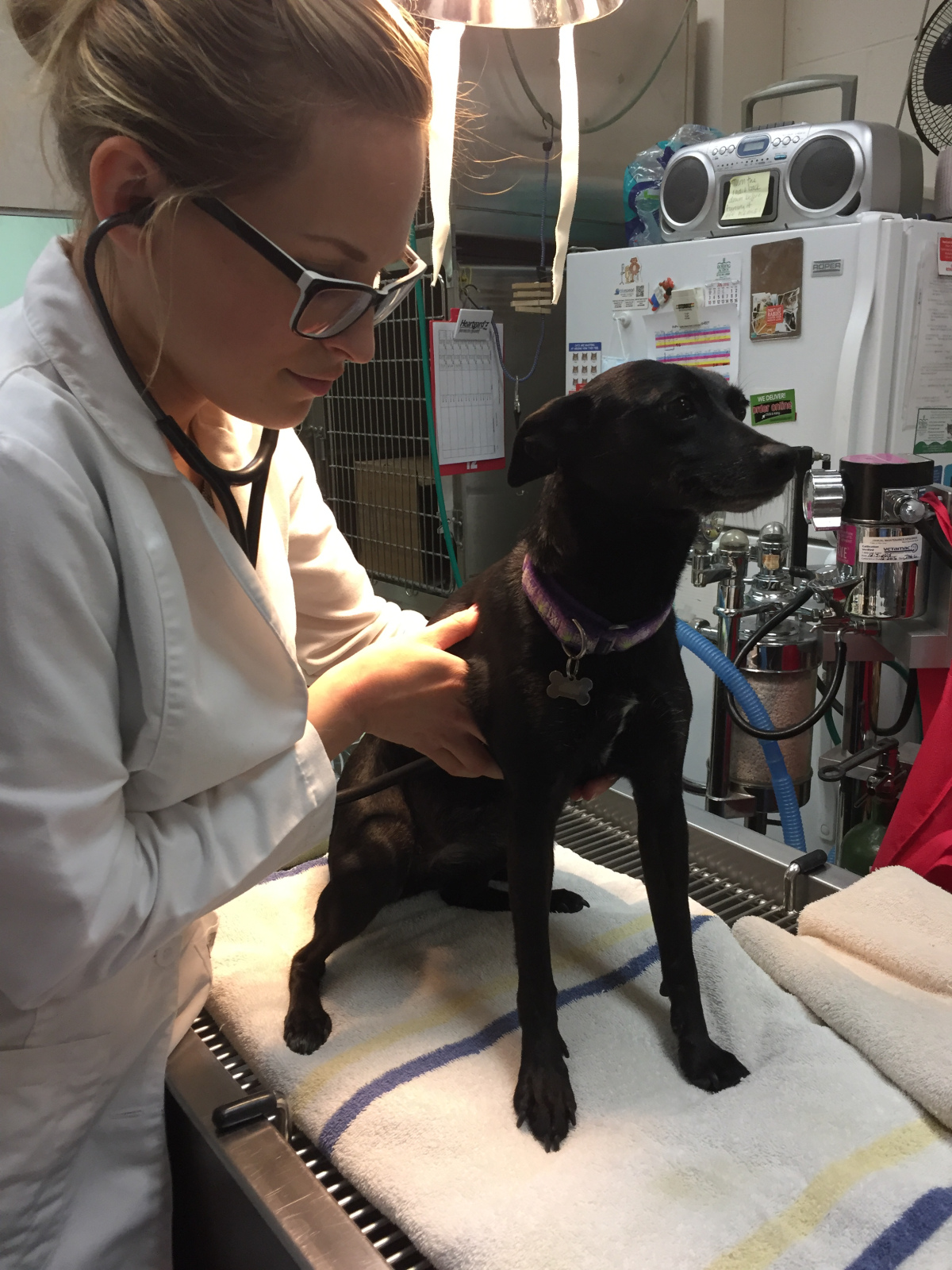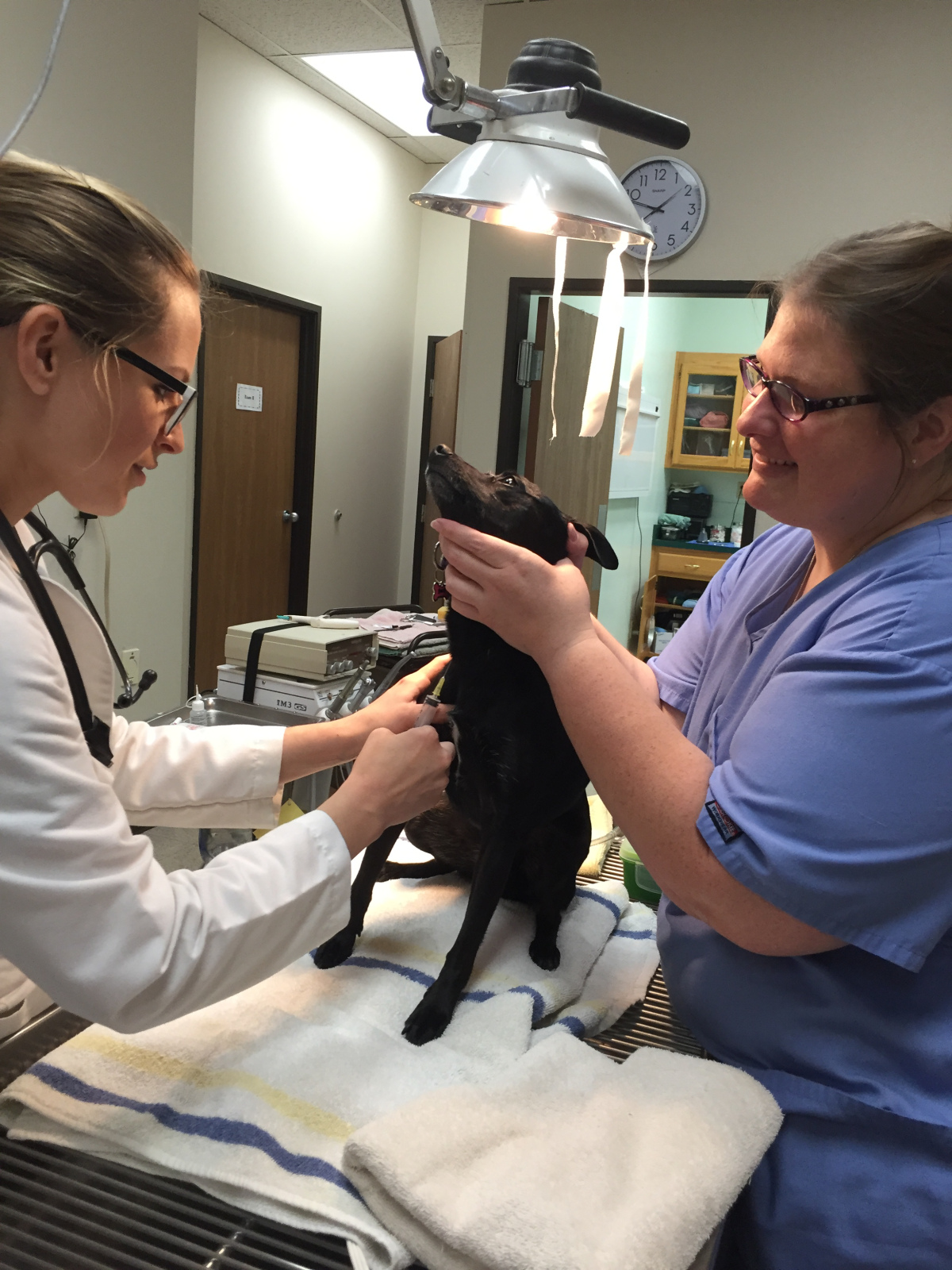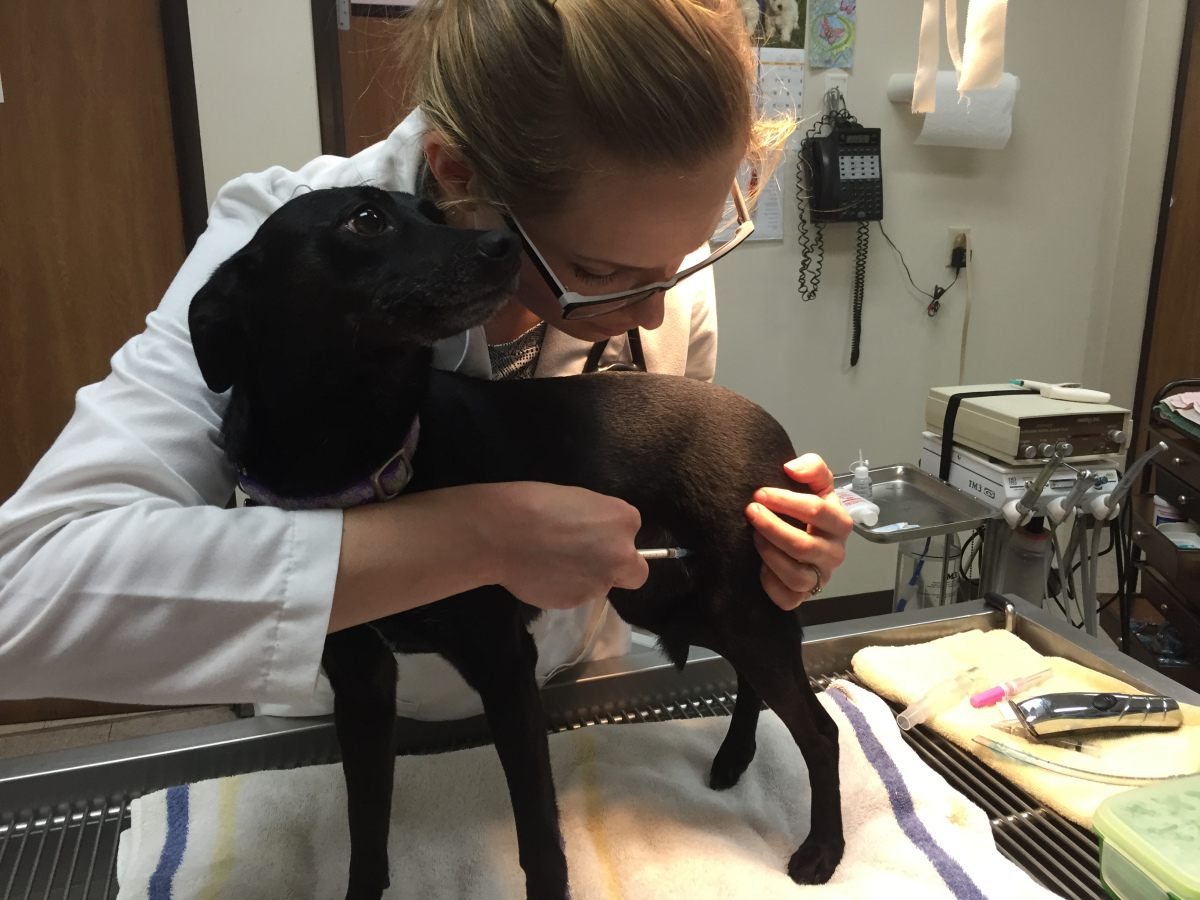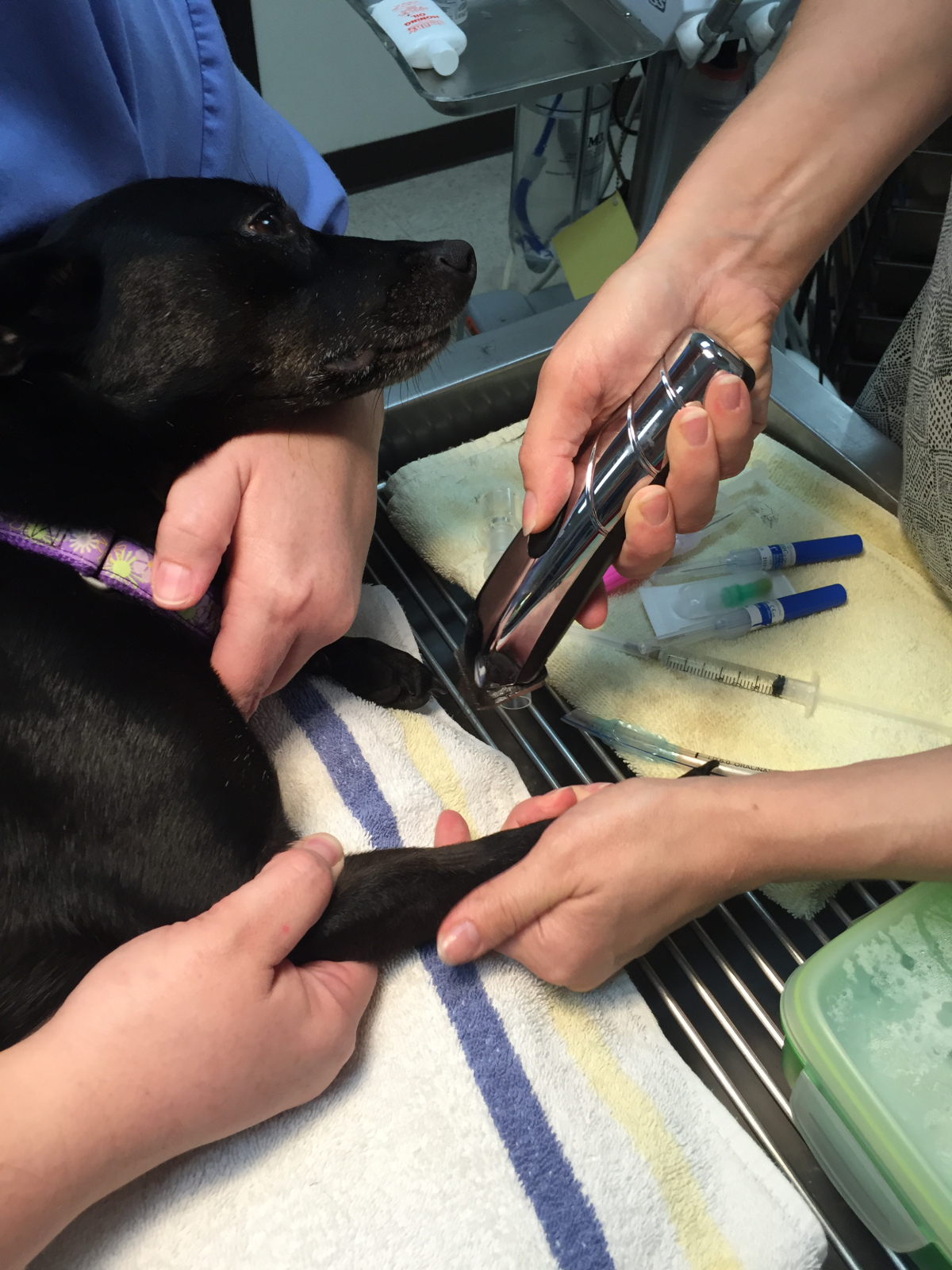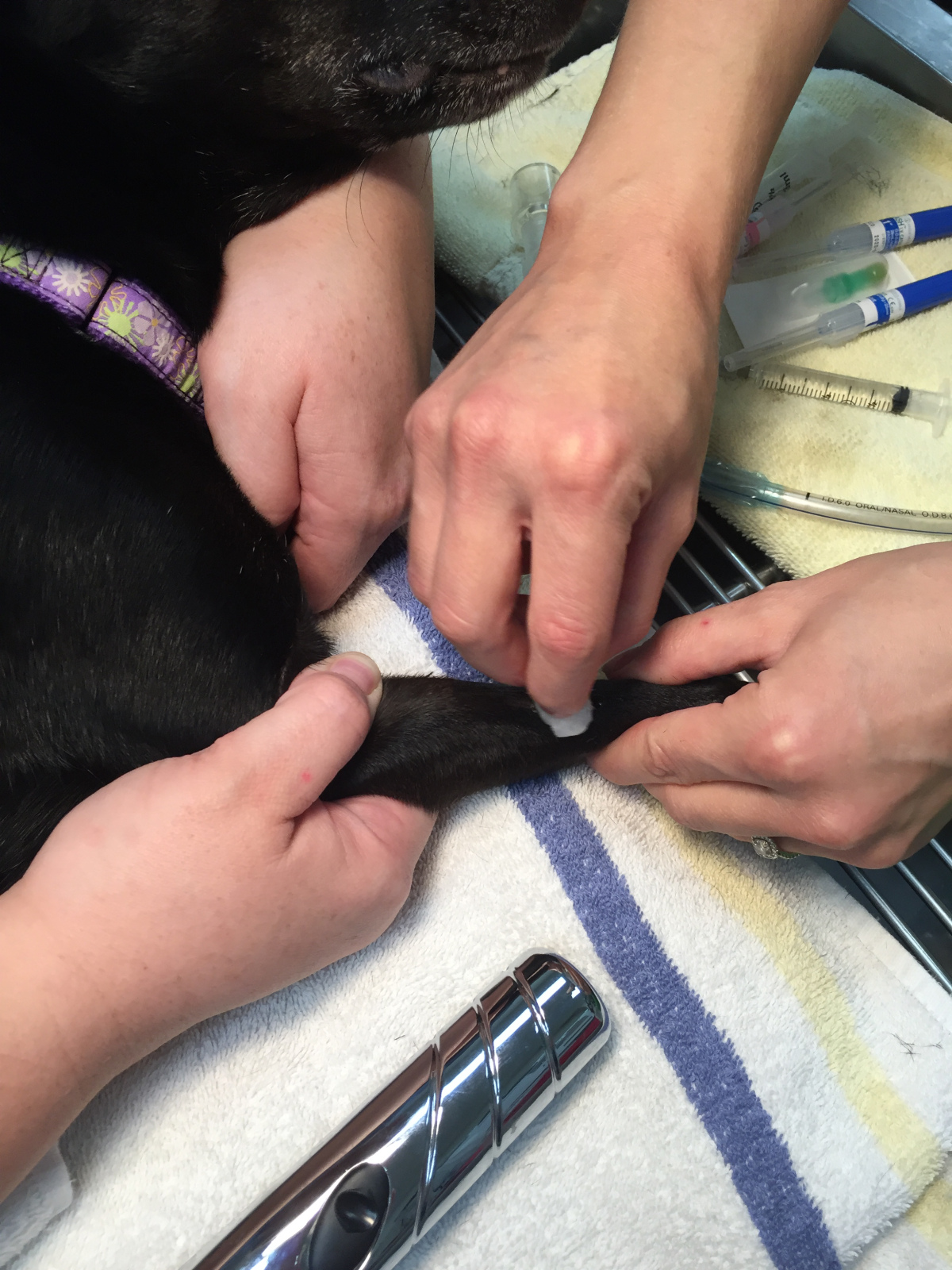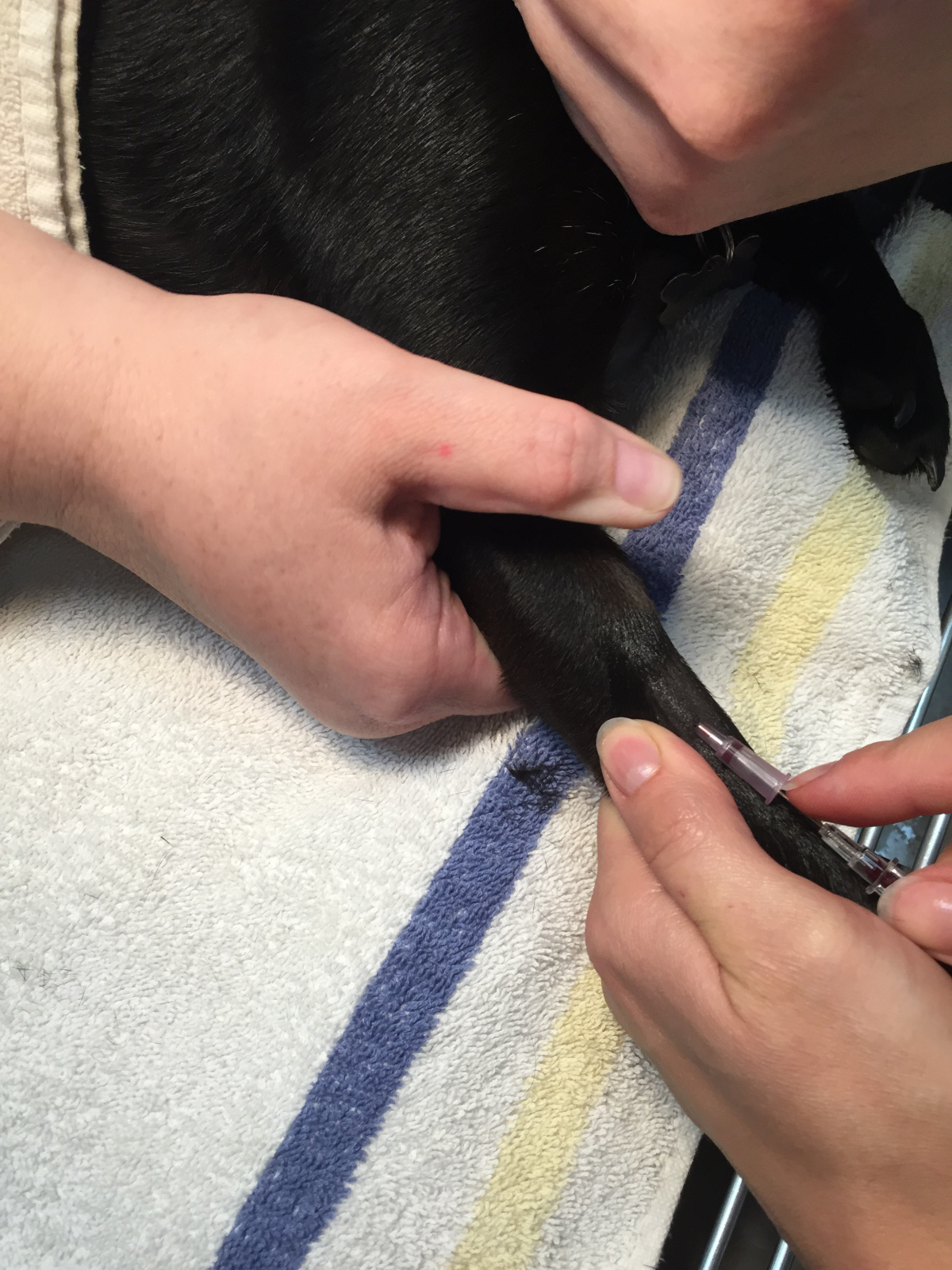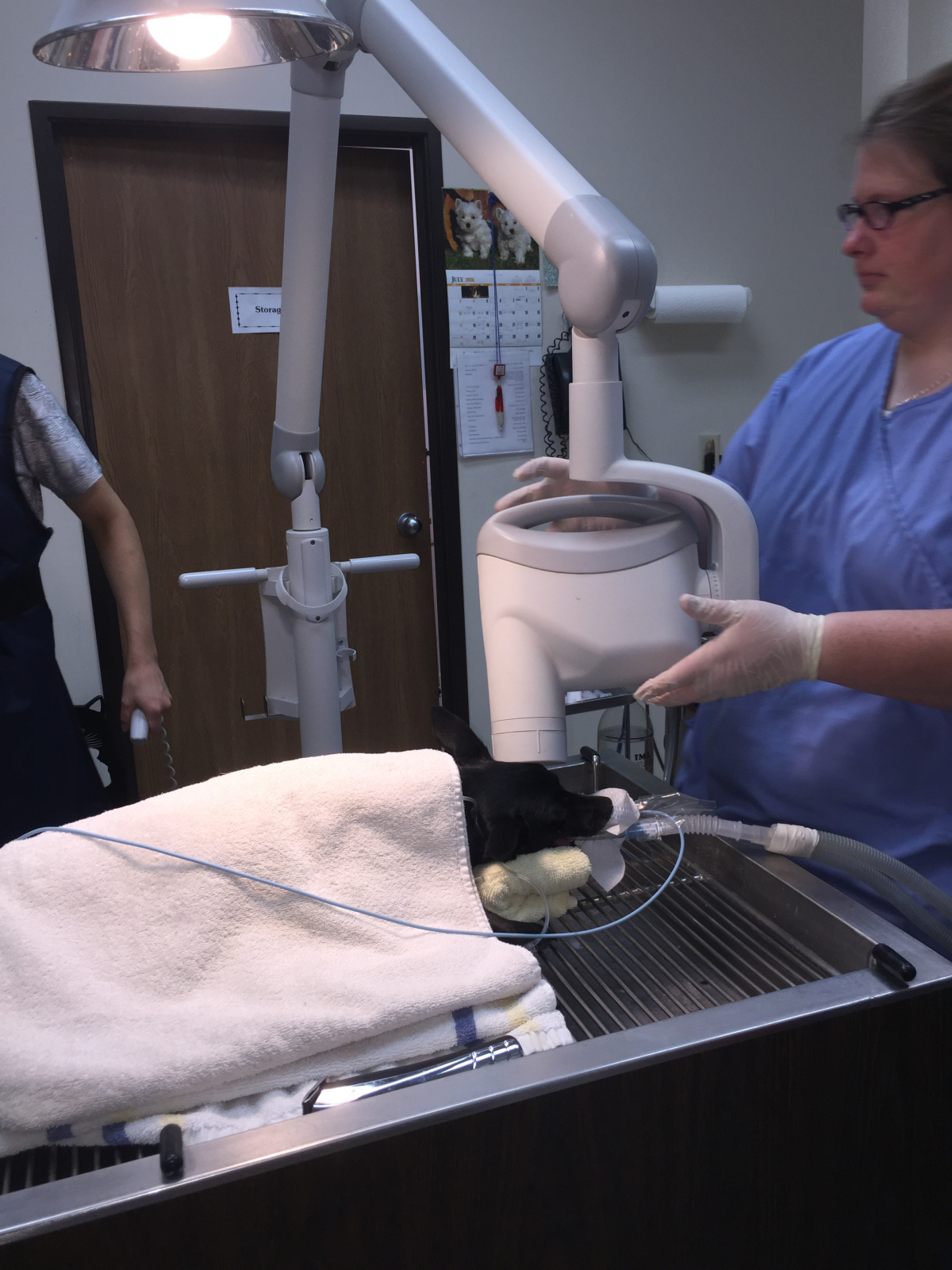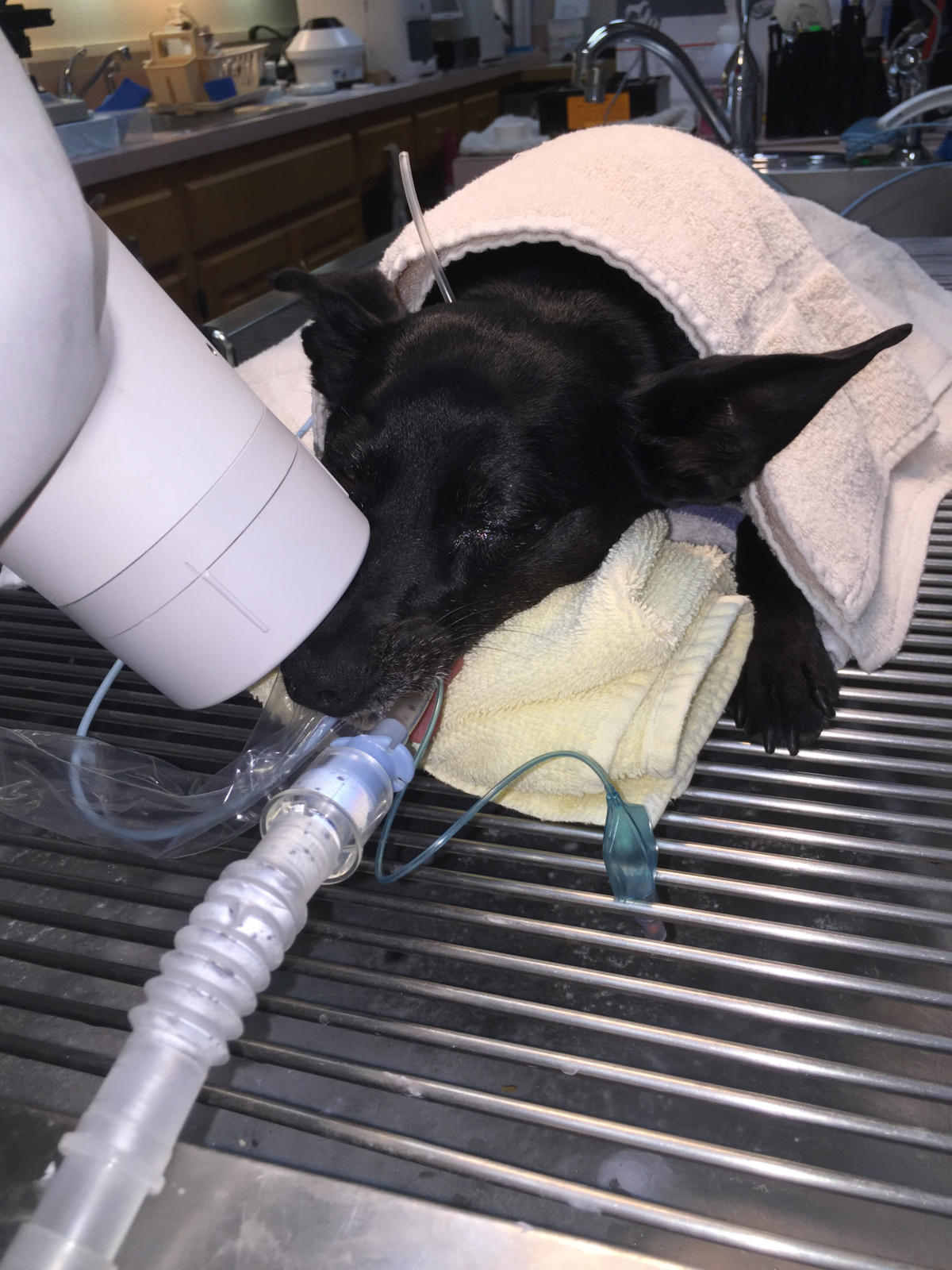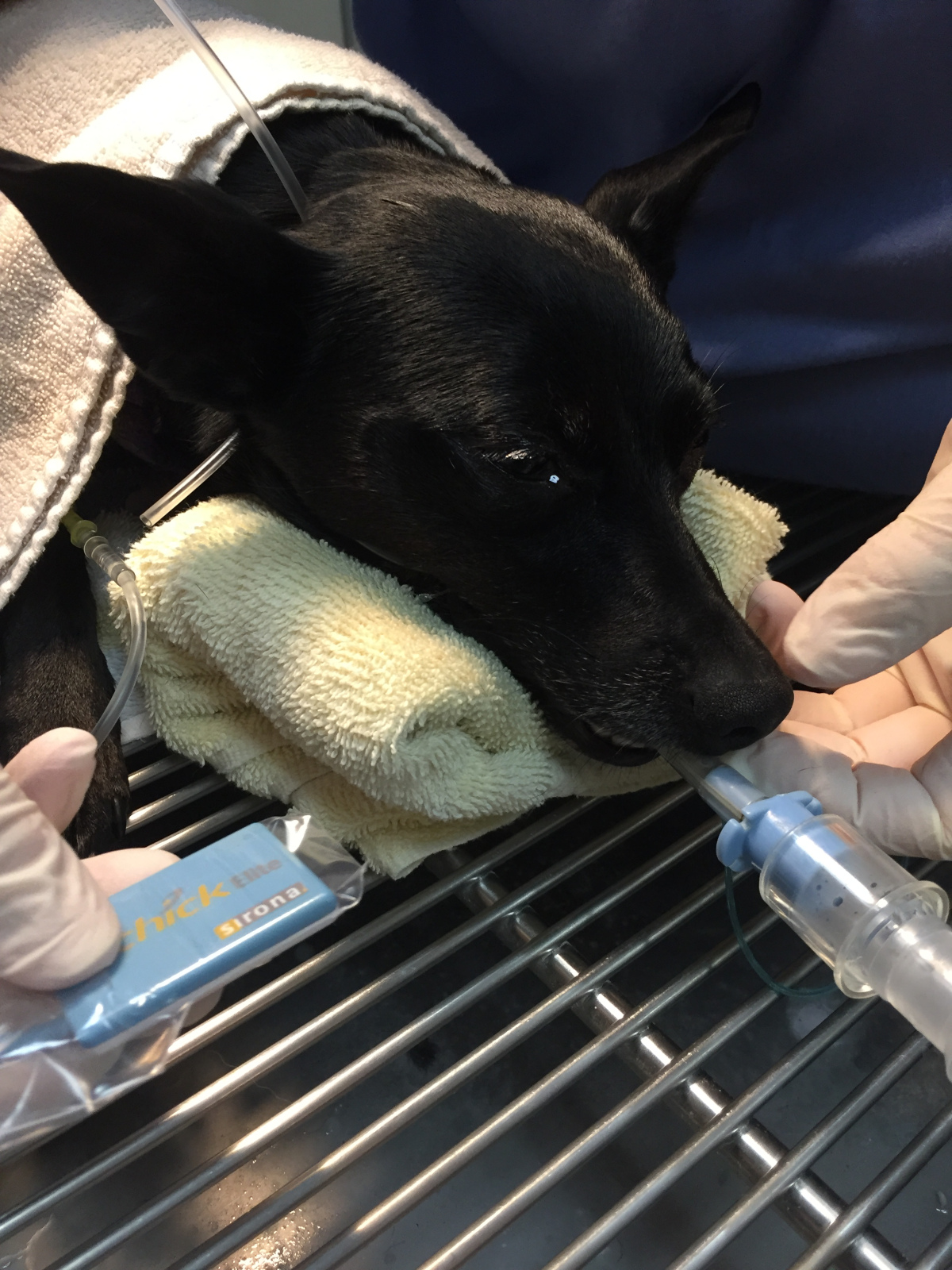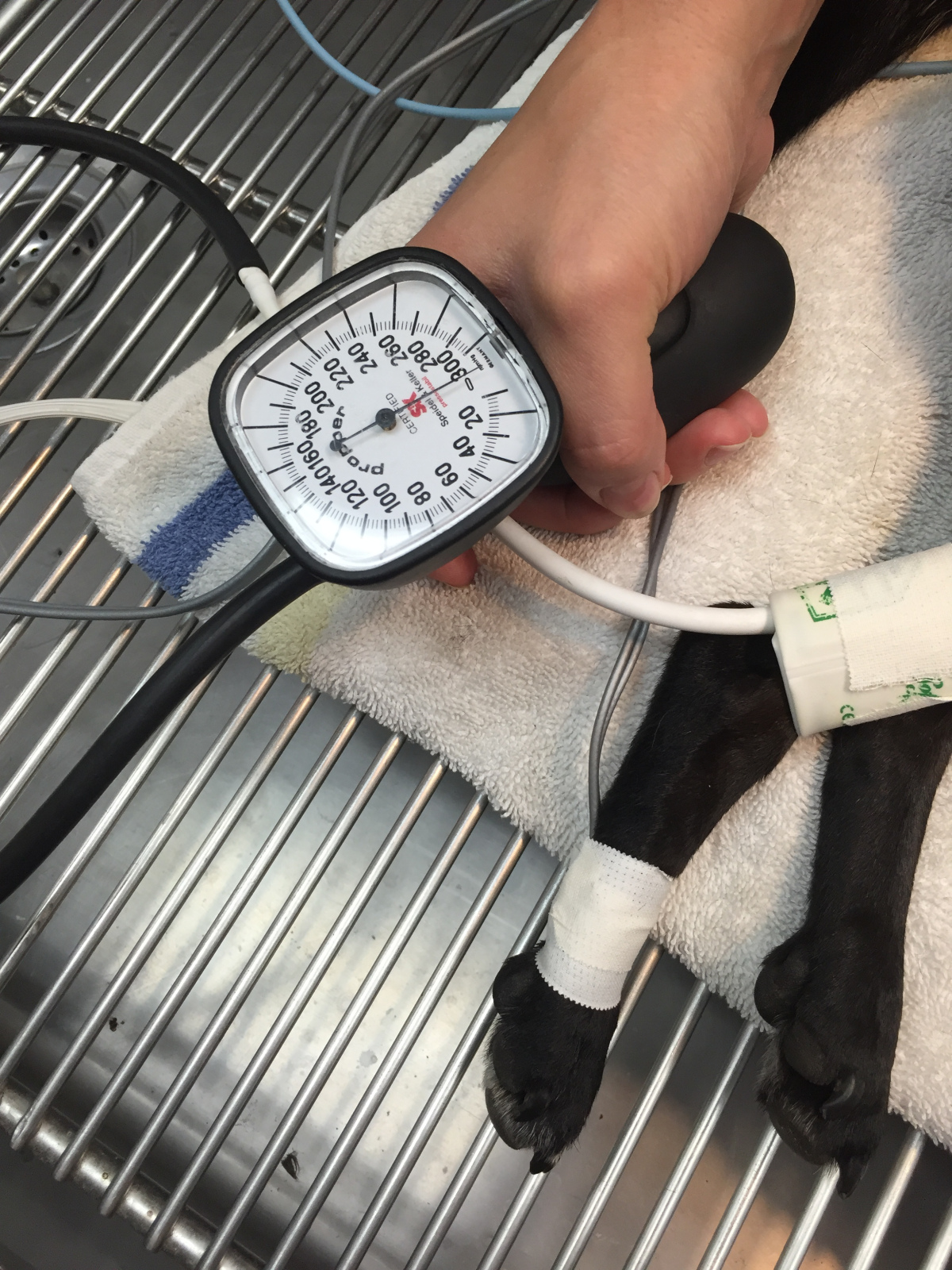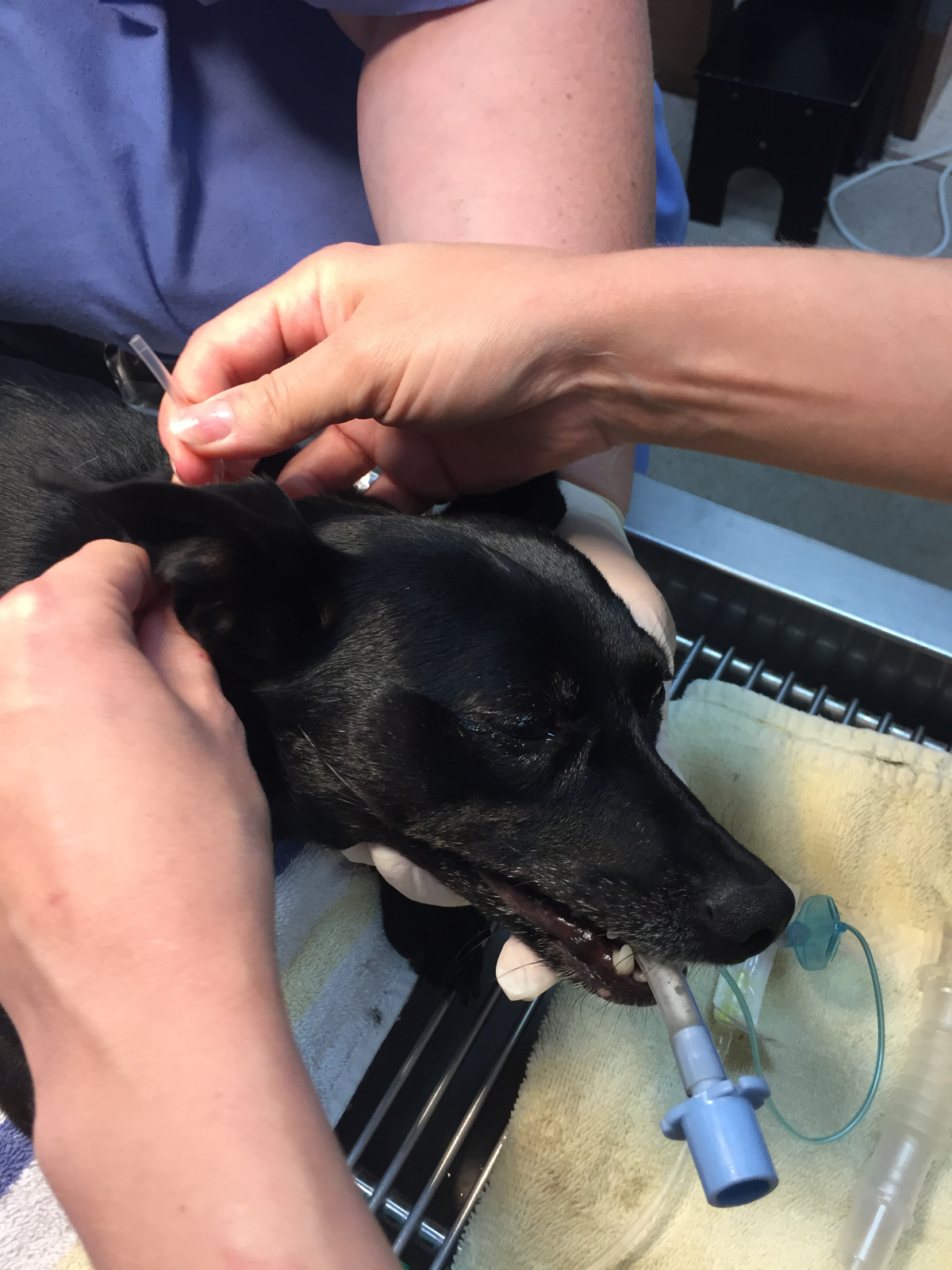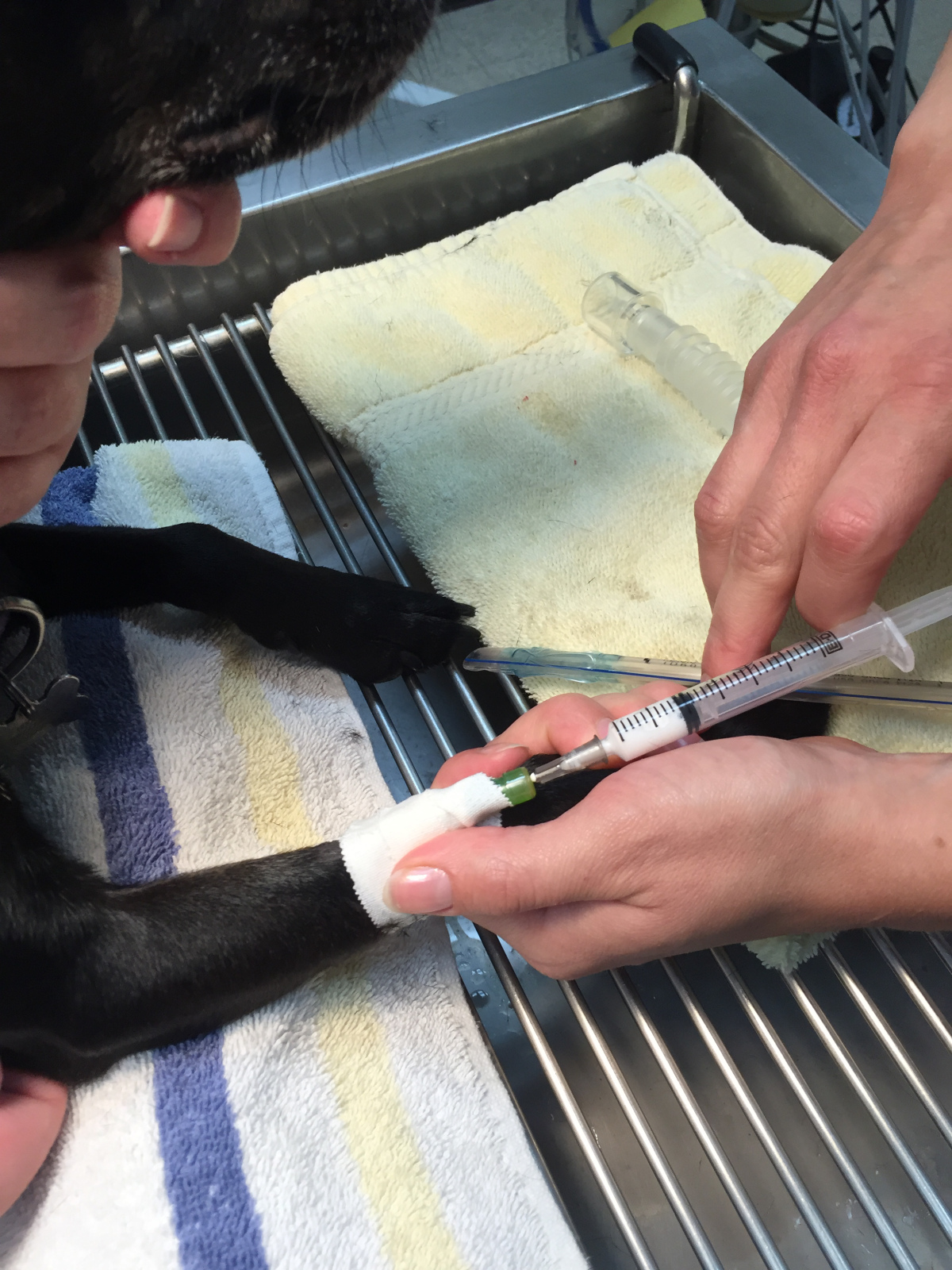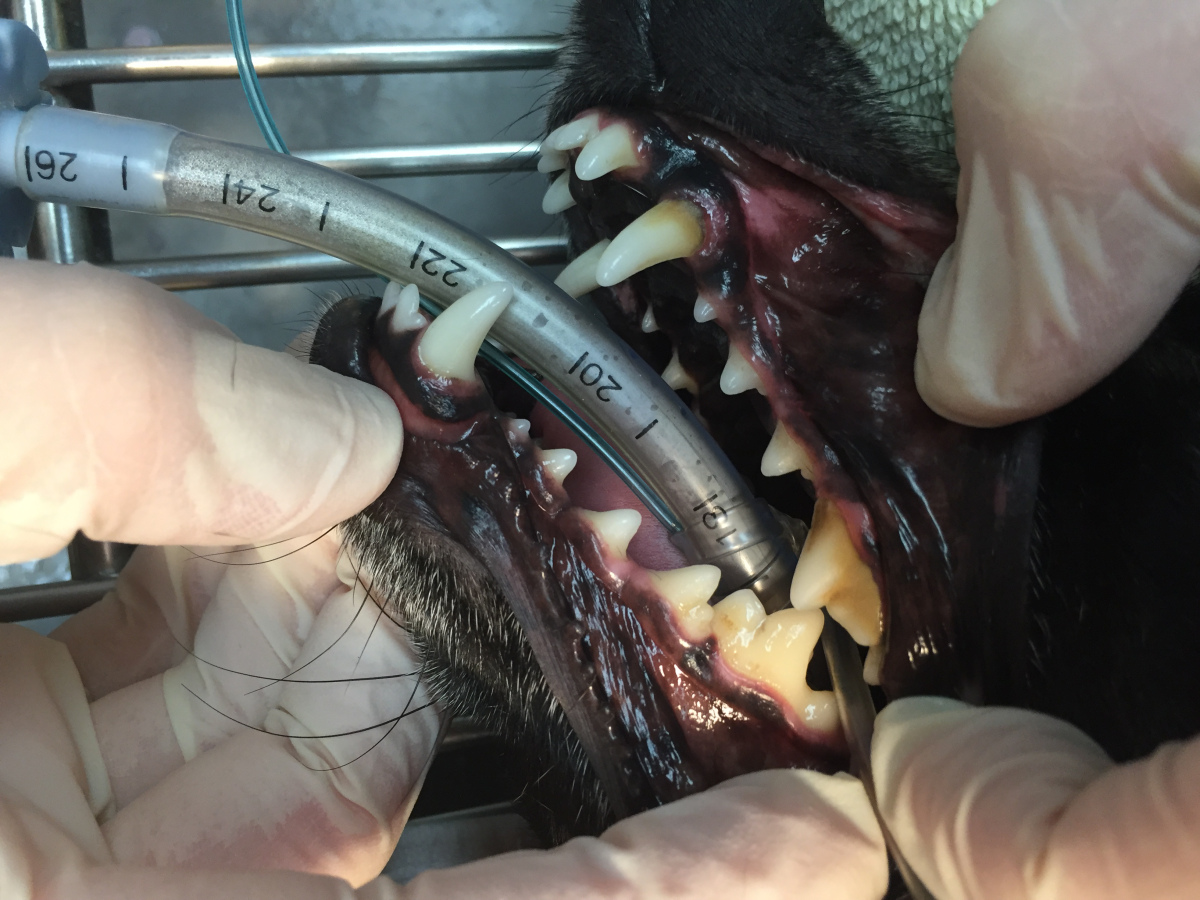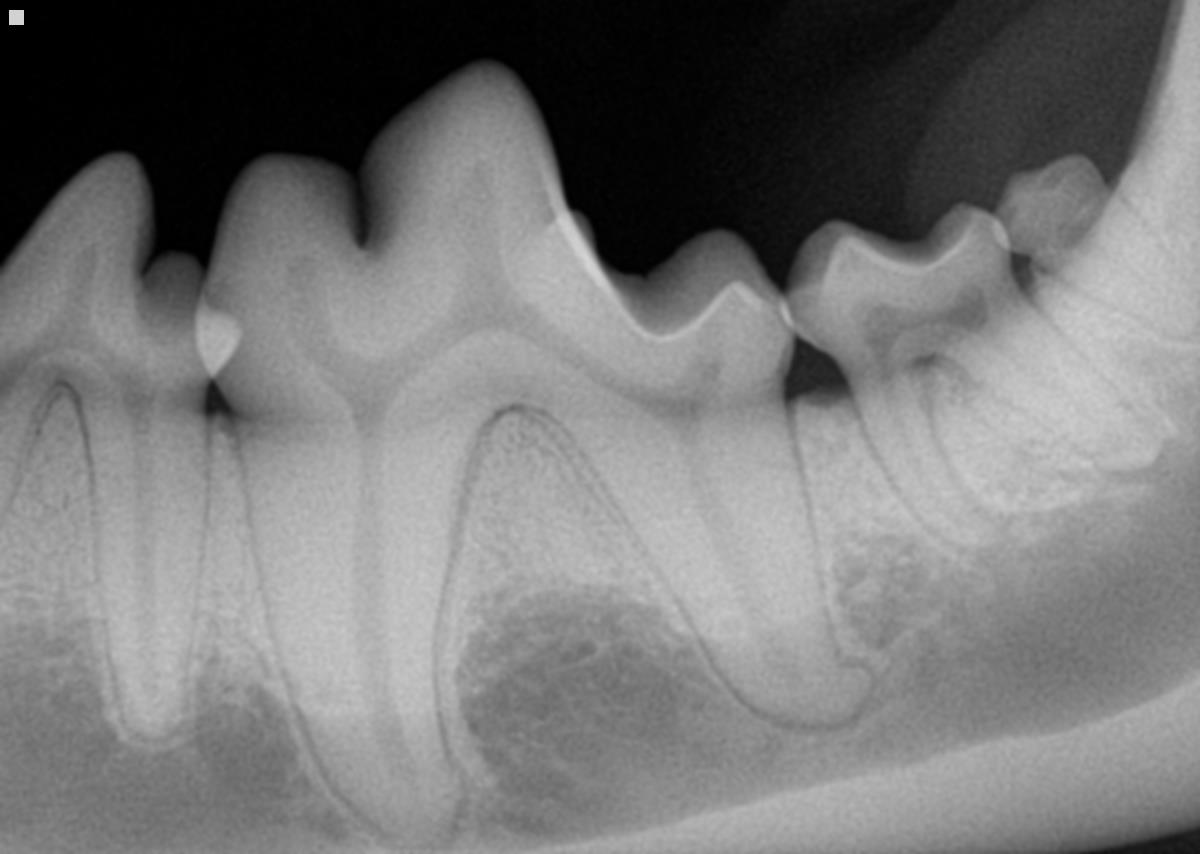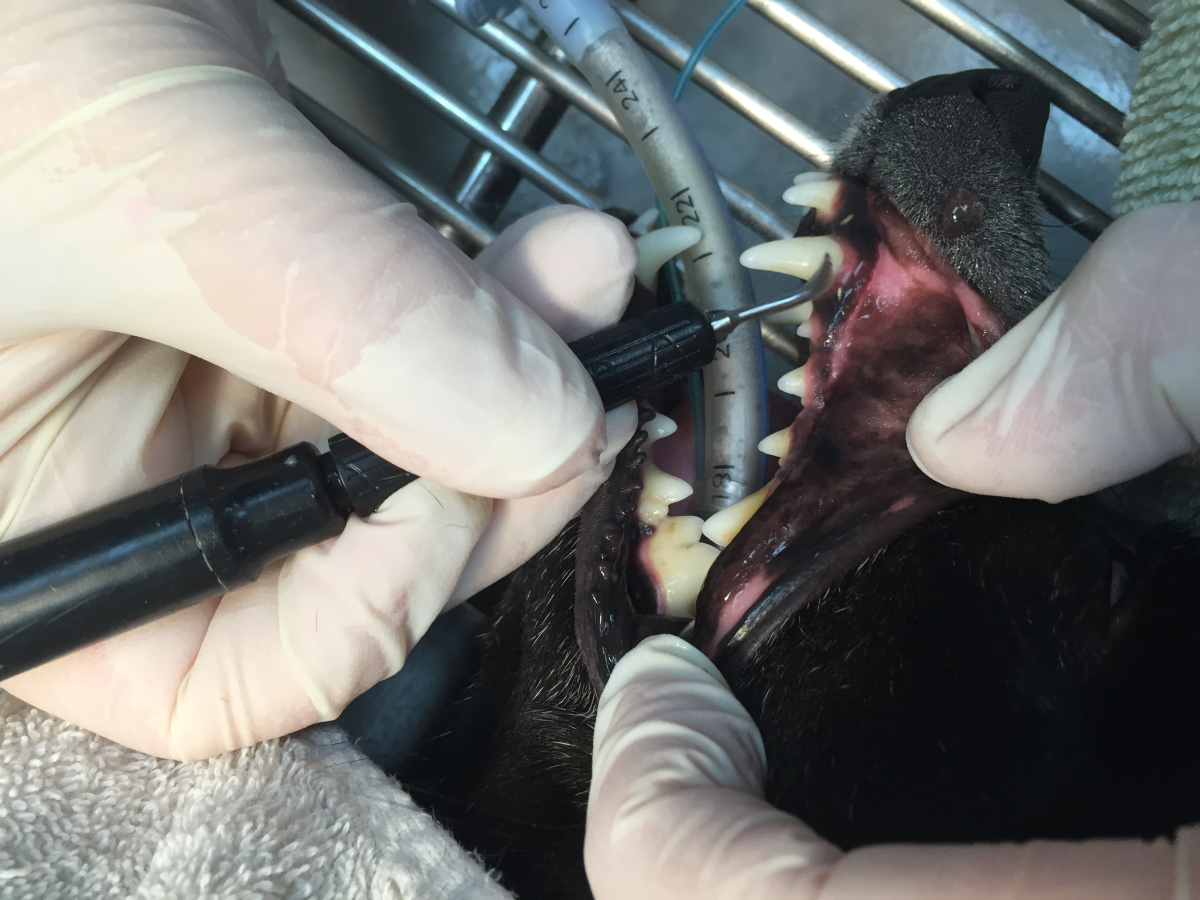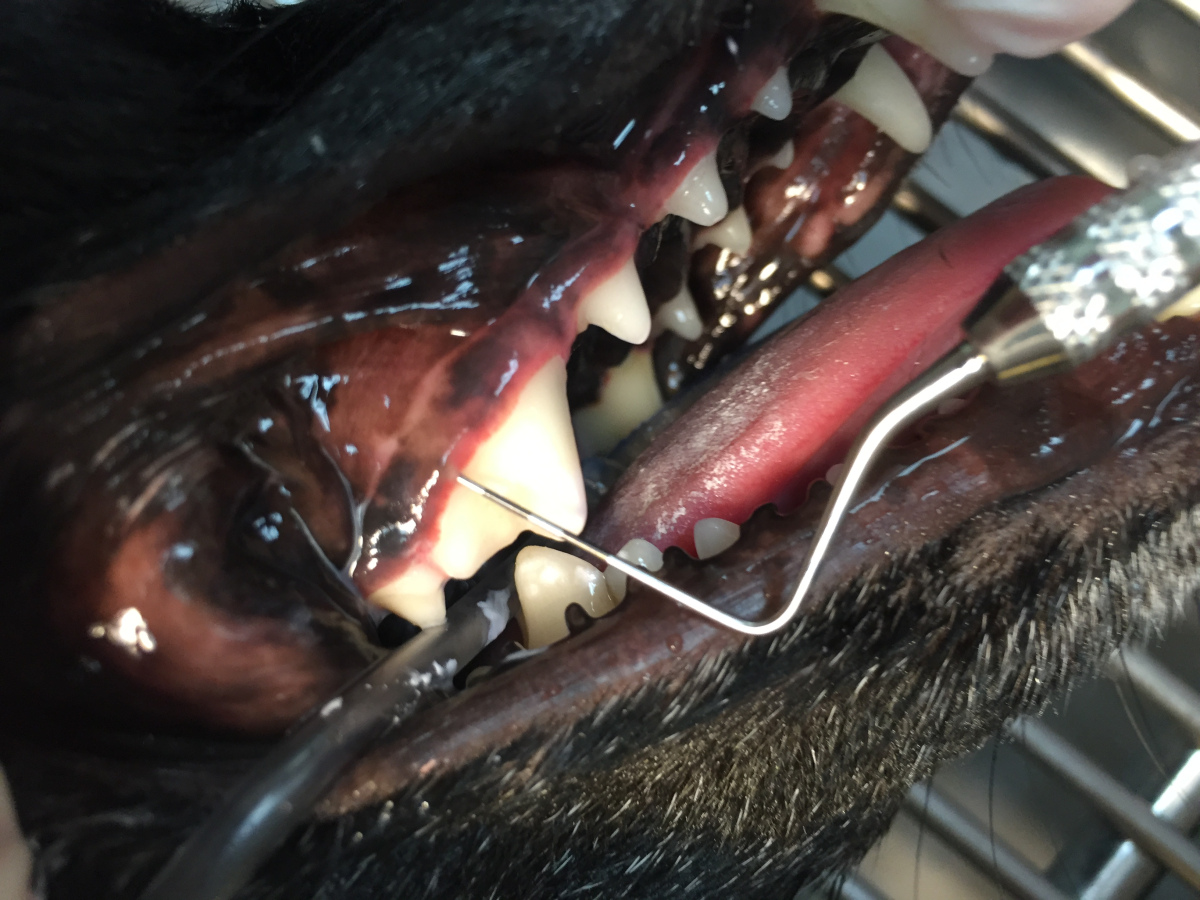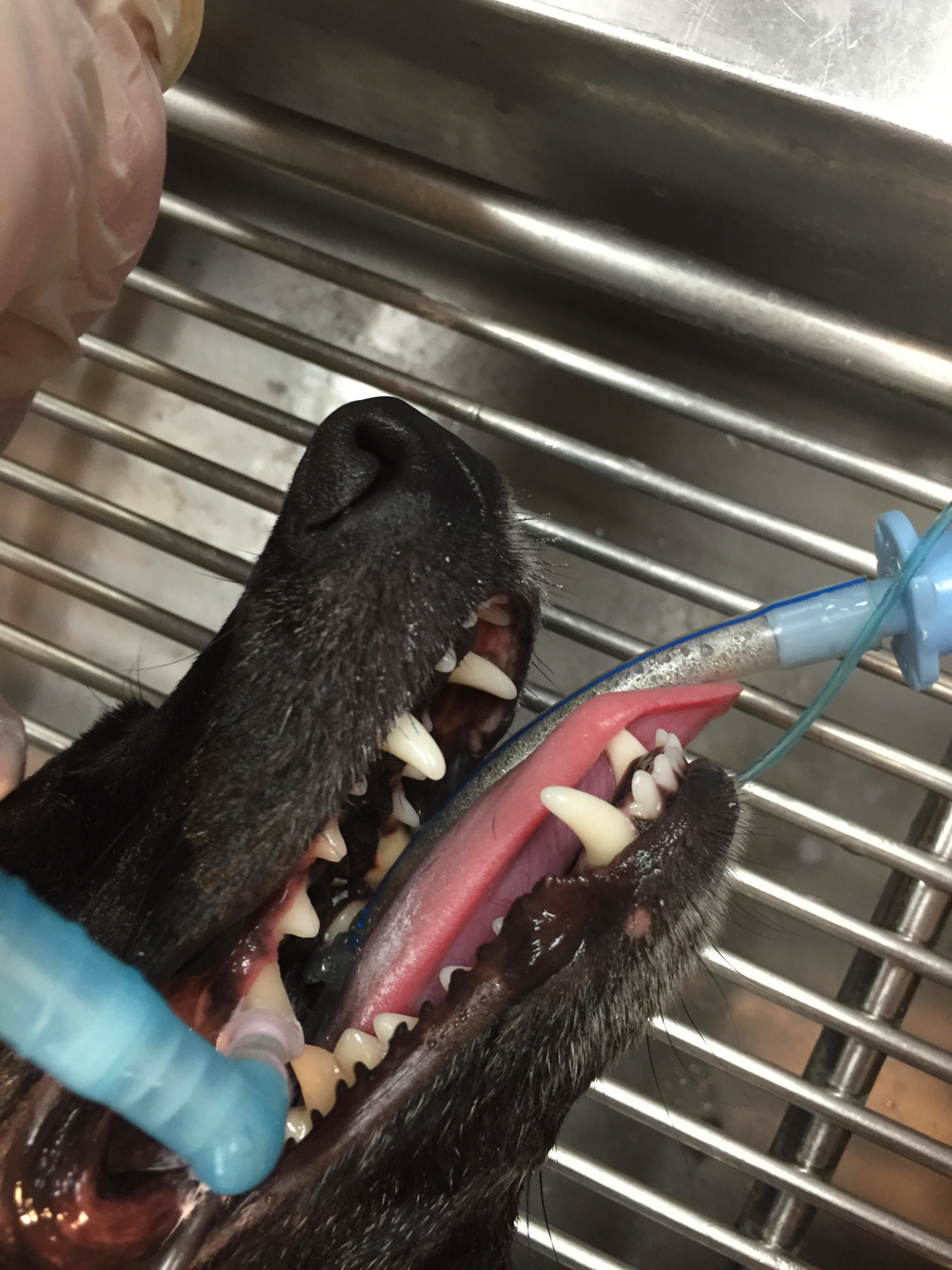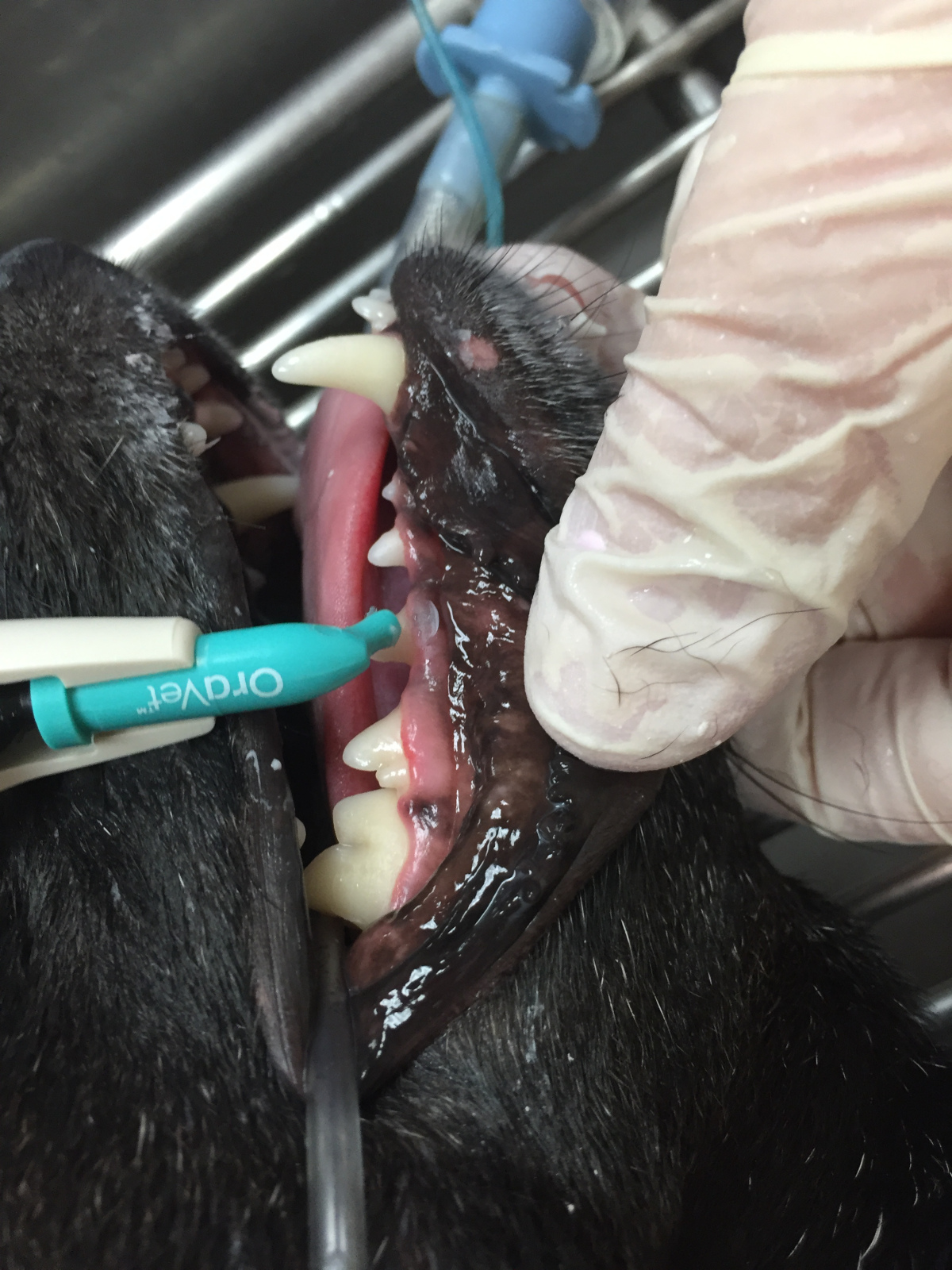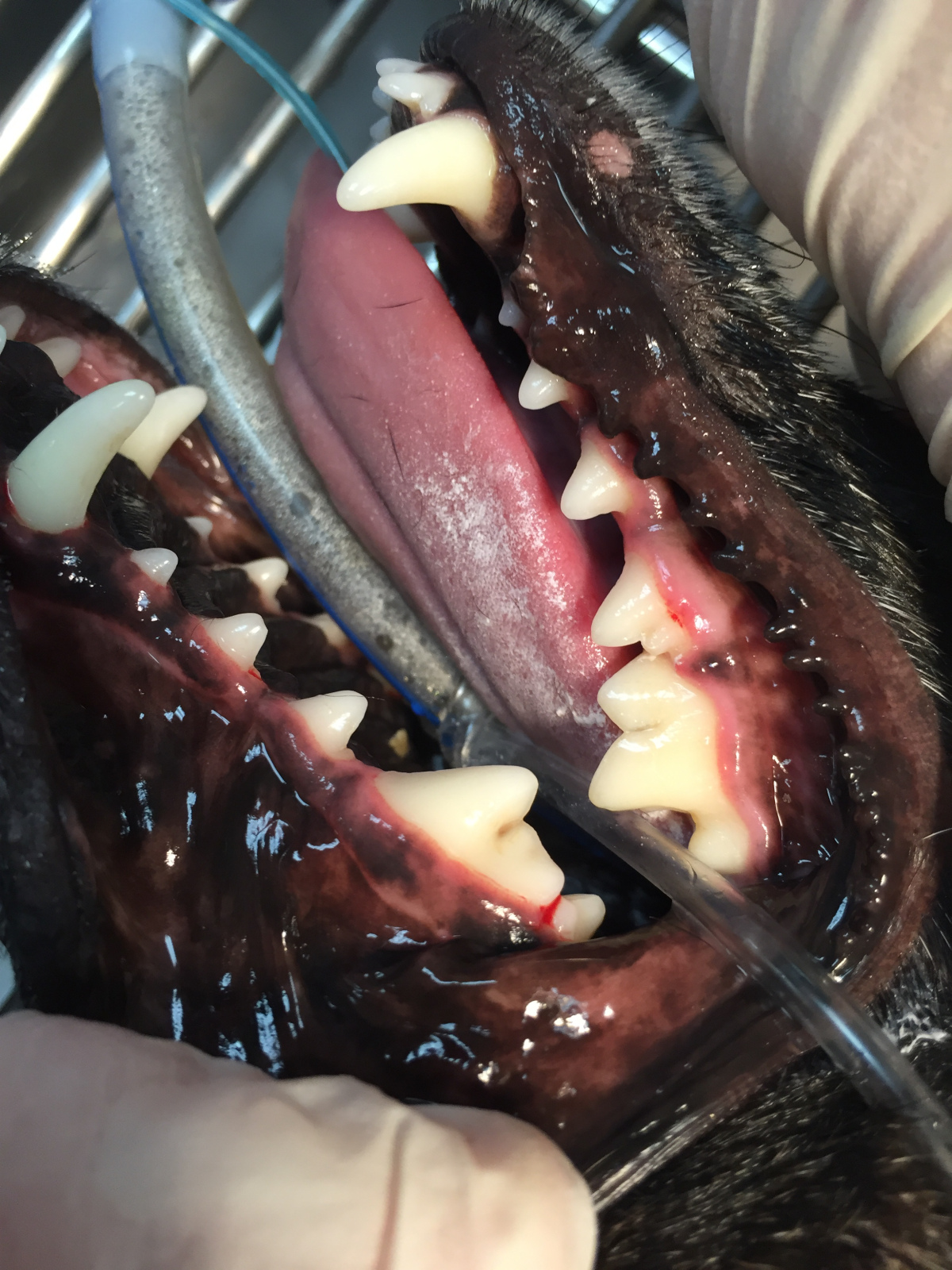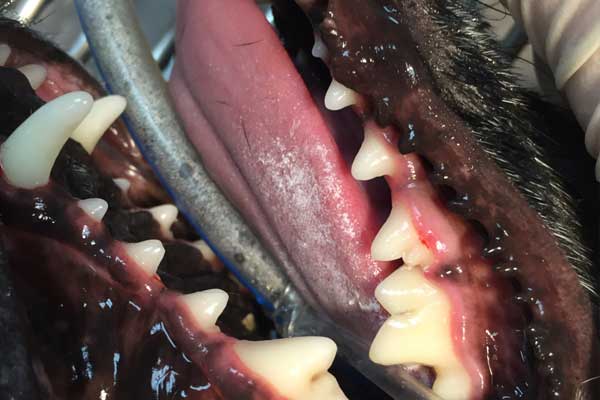
Suffering in Silence: The Dangers of Dirty Teeth
You take Fido in for his yearly exam, expecting an exceptional bill of health. After all, you have been working so well on keeping him fit and trim! Then it happens. Your vet drops the dental bomb on you. She tells you Fido has early periodontal disease, a painful infection of the teeth, gums, and jaw bone. In order to treat this condition, she explains that she will need to put Fido under anesthesia to deep clean his teeth, and maybe even remove some of them. She tells you there is no cure for periodontal disease, but she is committed to partnering with you to give Fido the best dental health possible throughout the rest of his life. You trust her judgement, but Fido is like a child to you, and you have so many questions!
Why do I need to have Fido’s teeth cleaned?
A healthy, pain-free mouth is an essential factor in your pet’s quality of life. When there is disease in the mouth due to infection, such as gingivitis and bone loss, Fido feels pain every time he eats. Furthermore, the dental disease is harboring LOADS of bacteria in the mouth that can get into the bloodstream and infect the liver, kidneys and heart, shortening Fido’s life.
But if Fido is feeling pain when he eats, why does he continue to eat?
Dogs (and cats) have evolved to continue sustaining their lives, even in the face of severe pain. Think about all the animals in the wild that continue eating and drinking despite severe injuries like broken legs. You would never assume a stray dog you found with a broken leg wasn’t feeling pain just because he was still willing to eat and drink and fight to live. But since dental disease is less obvious than a broken leg, we tend to underestimate the pain it causes.
So what exactly do you have to do make his teeth healthy again?
In our comprehensive oral assessment and treatment, we do the exact same procedures you experience at the dentist, but we have to put Fido under anesthesia in order to get them done. One of our Registered Veterinary Technicians (RVTs) will work as a team with the Veterinarian to anesthetize Fido. Then our RVT will take digital dental x-rays to look for disease under the gumline and inside the bone, where it oftentimes starts. The doctor will assess the x-rays while the technician scales, polishes, and seals the teeth to remove all tartar and plaque, and create a barrier to slow new tartar formation. When the teeth are clean, the team will examine the teeth together to assess visible signs of disease, and make a final decision on what (if any) problems need to be addressed immediately. Depending upon the severity of infection or trauma to each tooth, we may use an antibiotic gel or remove the affected teeth. Scroll through our pictures at the end of this post for more details.
If you remove Fido’s teeth, how is he going to eat? Will he need to be on soft food forever?
Most of a dog’s teeth are fairly non-essential to chewing the kibble they are accustomed to eating in modern times. For instance, the incisors were designed to pick meat off bones. Canines are used to kill prey and fight off other animals. Premolars are meant to tear muscle and other tissue from live prey. And finally, molars are used to further crush and crunch everything before it is swallowed. The only teeth your dog uses to chew kibble are the molars.
But isn’t anesthesia dangerous? Fido is getting up there in age. I’m worried he can’t handle it.
It is completely normal to be nervous about your beloved pet going under anesthesia! However, we hope you will take comfort in the fact that anesthetic risk is largely overestimated by pet owners. The most important factors in determining how risky an anesthetic procedure will be for your pet is the function of their heart, lungs, and kidneys. Your veterinarian will perform a thorough physical exam and blood work to assess the function of these organs prior to the procedure. If a significant abnormality is found, appropriate accommodations will be made or the procedure will be cancelled, depending upon the character of the abnormality. If you are apprehensive to address dental issues due to this fear of anesthesia, have a frank conversation with a veterinarian you trust to help you weigh the risks against the benefits.
You said we would partner in keeping Fido’s teeth as healthy as possible. What do I have to do from home?
Fido would benefit tremendously from having his teeth brushed every day with a toothpaste designed specifically for dogs. I would not recommend starting this habit until we have addressed the current infection in his mouth with an anesthetic dental procedure, as brushing infected teeth will cause him pain. We will teach you how to brush his teeth with a complimentary follow up exam with one of our technicians 2 weeks after his dental procedure.
A Day in the Life…
The following photos chronicle a typical dental procedure at Picture Hills Pet Hospital. Noodle is young, so she has tartar and only mild gingivitis. Since we are cleaning her teeth before significant inflammation and infection develops, we are able to get her mouth back to being 100% healthy!

